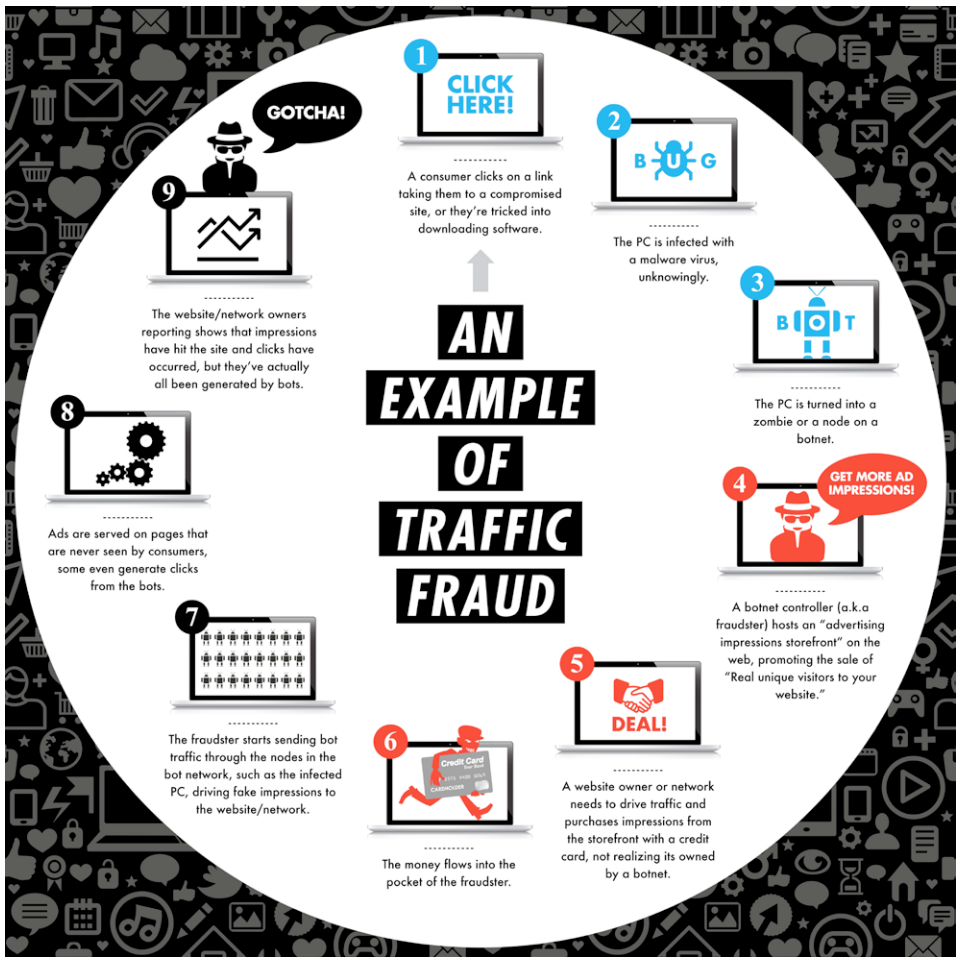Is That Display Ad Unviewable, Or Fraudulent? Consider The Intent
Contributor Rob Rasko explains how to distinguish between unviewable and fraudulent display ads.

As the debate intensifies about the impact of the digital twin evils of unviewable and fraudulent ads, there is one thing that all sides can – and should – agree upon: they simply are not the same.
It’s not exactly a “Eureka!” moment of epic proportions, but stakeholders in the interactive space continue to lump the two together.
Big mistake.
Why Is This Distinction Even Important?
According to PointRoll’s 2013 study, a total of 60.4% of online ads were viewable in 2013, leaving the other 39.6% unviewable. Additionally, The Wall Street Journal reported that, “about 36% of all web traffic is considered fake…the product of computers hijacked by viruses and programmed to visit sites.”
As I explained in my June 2014 contribution, Is The Opposite Of a Viewable Display Ad…’Unviewable’?, the industry must separate the “unviewable” ad discussion from the fraudulent conversation, as the two are separate issues.
The best way to understand the difference may be through the eyes of an individual interacting with the ads themselves.
Let’s imagine, for a moment, a young woman named Sam, who is a recent graduate working an entry-level job and living paycheck-to-paycheck in her studio apartment. She decides to scour the internet to find recipes so she can prepare healthy and affordable meals for herself.
She first checks allrecipes.com, where she is served a series of ads − some in view, some not. The ads not in view are deemed so because they do not display half of the advertisement in Sam’s browser for at least one second, as defined by the 3MS Initiative.
One ad in particular catches Sam’s eye − not because she wants to be lured away from the original content on the page, but because the ad itself is native and it is advertising free cookbook downloads − an appealing proposition for someone struggling to make ends meet.
Sam clicks on the link and decides to download the free cookbook. Unbeknownst to her, the ad itself or the landing page contains malware. As a result, the cookbook download turns her computer into a bot node, a single PC that becomes part of a botnet through being infected with malware.
Now, the fraudster hosts a storefront on the internet, earning money from ad networks or website owners compensating the fraudster to drive traffic to their sites. The fraudster cashes in and begins sending bot traffic through the nodes in the bot network, such as Sam’s infected PC.
As a result, ads are “served” on pages that are never actually seen by consumers — only the bots are calling the pages. The fraudster even has bots that are able to generate “clicks” to seemingly produce value for the website owner or network that is paying the fraudster. By doing so, the fraudster is able to show that traffic has hit the site and clicks have occurred.
The website or ad network owners may or may not be aware that the traffic they’re paying for is fraudulent. In any case, the fraudulent traffic earns the website or network owner revenue, because advertisers are paying to have their ads displayed, or paying by the click. Advertisers aren’t getting any value, of course, because no actual customer or potential customer is seeing or clicking on the ads.
Here’s a visual explanation from the Interactive Advertising Bureau (click to expand):
Unviewable Does Not Equal Fraudulent
It is essential to understand the distinction between the two, because unviewable ads are not necessarily fraudulent − the classifications are independent of one another.
Clearly, Sam’s interaction − or lack thereof − with unviewable ads is different from the interaction she has with fraudulent ads. One ad is never seen, or not seen enough to be counted as making an impression.
The fraudulent ad traffic is different — her computer is commandeered by a botnet operator and used to generate fraudulent views and clicks, though a person never even has a chance to see an ad.
To understand the difference between unviewable ads and fraudulent ads, let’s look at Sam’s interaction with unviewable ads first. The publisher that serves ads which do not meet viewability criteria has nothing to gain from serving unviewable ads.
The publishers are not deceitful; they are simply unable to always make their ads viewable. They can’t make people scroll all the way to the bottom of every page, so some unviewable ads are inevitable.
Conversely, the ads “seen” by Sam’s computer, when it’s serving as a botnet, are the result of a different intent, as the fraudster is knowingly calling ads that will never (and can never) be seen by a user, yet is charging the publishers and networks — which are, in turn, charging the marketers — as if the ads were viewable.
Defining The Differences
By definition, unviewable ads are advertisements that don’t meet a metric, while fraudulent ads are meant to illegally earn money through deception and malware.
Discerning the individual characteristics of unviewable ads and fraudulent ones is essential for marketing and digital media pros, as the conversation around these issues will only continue.
For digital media pros, understanding the intent of fraudulent ads versus unviewable ads is the key to propelling forward the conversations around both in a more meaningful and productive way.
Contributing authors are invited to create content for MarTech and are chosen for their expertise and contribution to the search community. Our contributors work under the oversight of the editorial staff and contributions are checked for quality and relevance to our readers. MarTech is owned by Semrush. Contributor was not asked to make any direct or indirect mentions of Semrush. The opinions they express are their own.
Related stories
